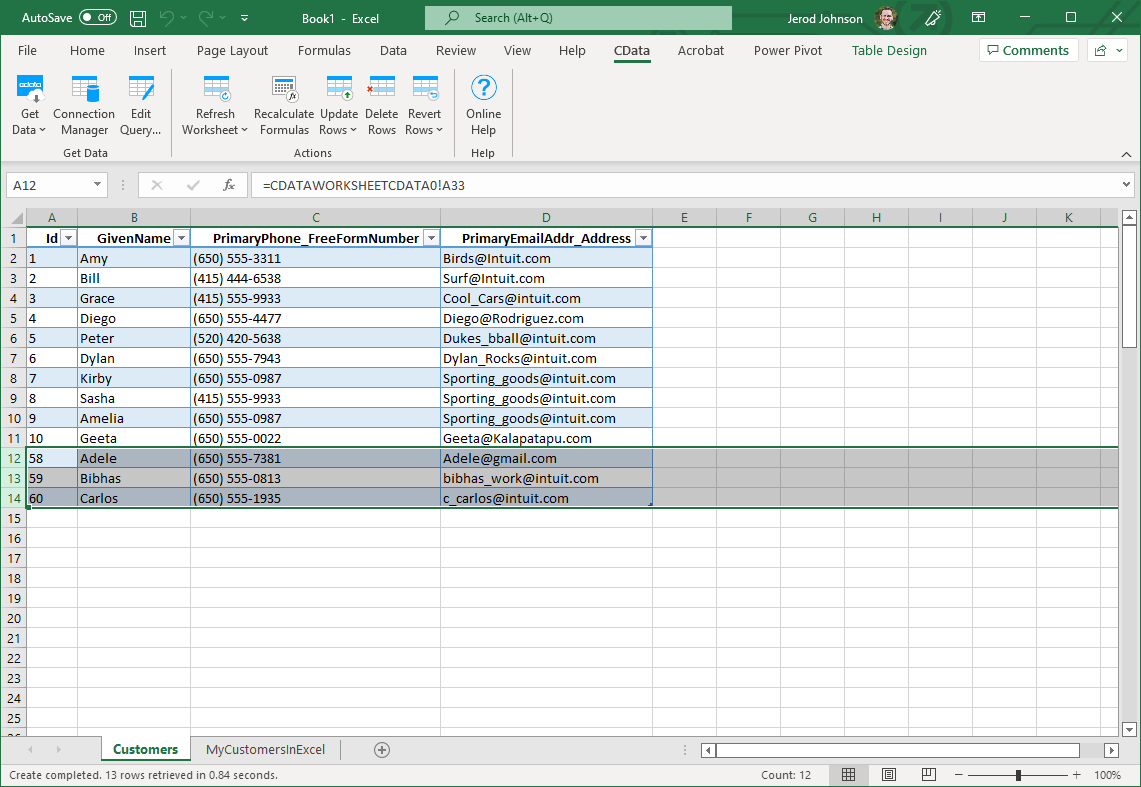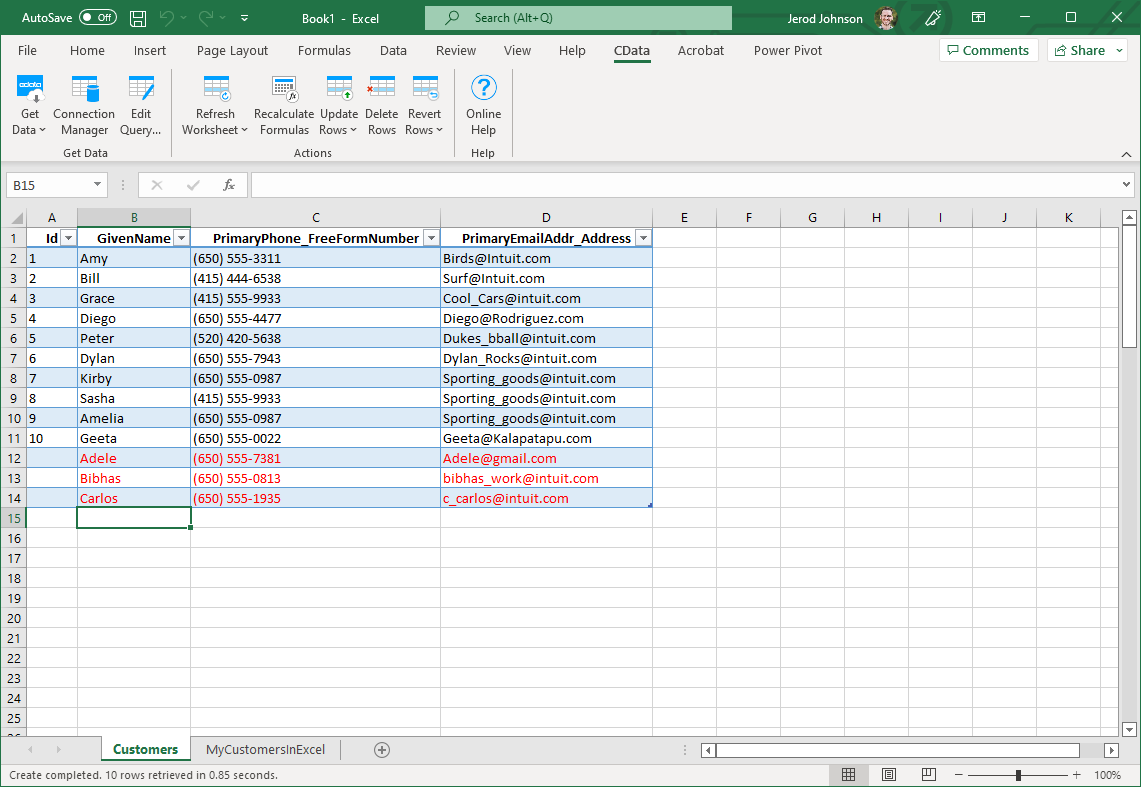Model Context Protocol (MCP) finally gives AI models a way to access the business data needed to make them really useful at work. CData MCP Servers have the depth and performance to make sure AI has access to all of the answers.
Try them now for free →How to update MongoDB from Excel
This article explains how to transfer data from Excel to MongoDB using the Excel Add-In for MongoDB.
The CData Excel Add-In for MongoDB enables you to edit and save MongoDB data directly from Excel. This article explains how to transfer data from Excel to MongoDB. This technique is useful if you want to work on MongoDB data in Excel and update changes, or if you have a whole spreadsheet you want to import into MongoDB. In this example, you will use the restaurants table; however, the same process will work for any table that can be retrieved by the CData Excel Add-In.
About MongoDB Data Integration
Accessing and integrating live data from MongoDB has never been easier with CData. Customers rely on CData connectivity to:
- Access data from MongoDB 2.6 and above, ensuring broad usability across various MongoDB versions.
- Easily manage unstructured data thanks to flexible NoSQL (learn more here: Leading-Edge Drivers for NoSQL Integration).
- Leverage feature advantages over other NoSQL drivers and realize functional benefits when working with MongoDB data (learn more here: A Feature Comparison of Drivers for NoSQL).
MongoDB's flexibility means that it can be used as a transactional, operational, or analytical database. That means CData customers use our solutions to integrate their business data with MongoDB or integrate their MongoDB data with their data warehouse (or both). Customers also leverage our live connectivity options to analyze and report on MongoDB directly from their preferred tools, like Power BI and Tableau.
For more details on MongoDB use case and how CData enhances your MongoDB experience, check out our blog post: The Top 10 Real-World MongoDB Use Cases You Should Know in 2024.
Getting Started
Establish a Connection
If you have not already done so, create a new MongoDB connection by clicking From MongoDB on the ribbon.
Set the Server, Database, User, and Password connection properties to connect to MongoDB. To access MongoDB collections as tables you can use automatic schema discovery or write your own schema definitions. Schemas are defined in .rsd files, which have a simple format. You can also execute free-form queries that are not tied to the schema.
Retrieve Data from MongoDB
To insert data into MongoDB, you will first need to retrieve data from the MongoDB table you want to add to. This links the Excel spreadsheet to the MongoDB table selected: After you retrieve data, any changes you make to the data are highlighted in red.
- Click the From MongoDB button on the CData ribbon. The Data Selection wizard is displayed.
- In the Table or View menu, select the restaurants table.
- In the Maximum Rows menu, select the number of rows you want to retrieve. If you want to insert rows, you need to retrieve only one row. The Query box will then display the SQL query that corresponds to your request.
- In the Sheet Name box, enter the name for the sheet that will be populated. By default the add-in will create a new sheet with the name of the table.
Insert Rows to MongoDB
After retrieving data, you can add data from an existing spreadsheet in Excel.
- In a cell after the last row, enter a formula referencing the corresponding cell from the other spreadsheet; for example, =MyrestaurantsSheetInExcel!A1.
![A local copy of a table. One row will be inserted. (QuickBooks is shown.)]()
- After using a formula to reference the cells you want to add to MongoDB, select the cells that you are inserting data into and drag the formula down as far as needed. The referenced values you want to add will be displayed on
the restaurants sheet.
![The range of changes to update. (QuickBooks is shown.)]()
- Highlight the rows you want to insert and click the Update Rows button.
As each row is inserted, the Id value will appear in the Id column and the row's text will change to black, indicating that the record has been inserted.




